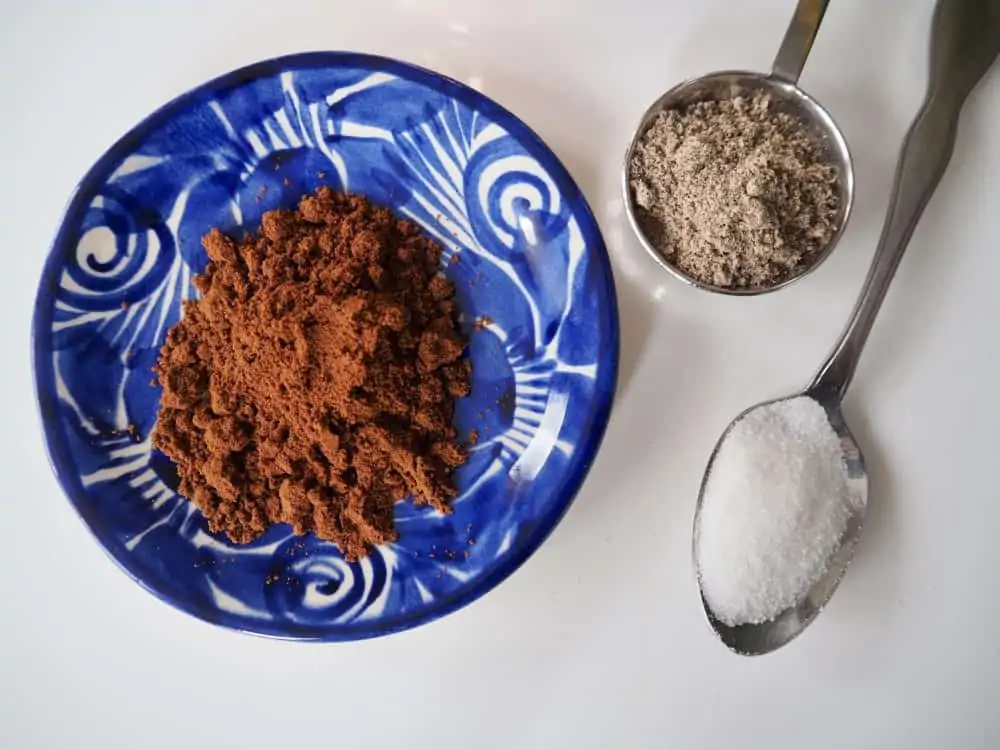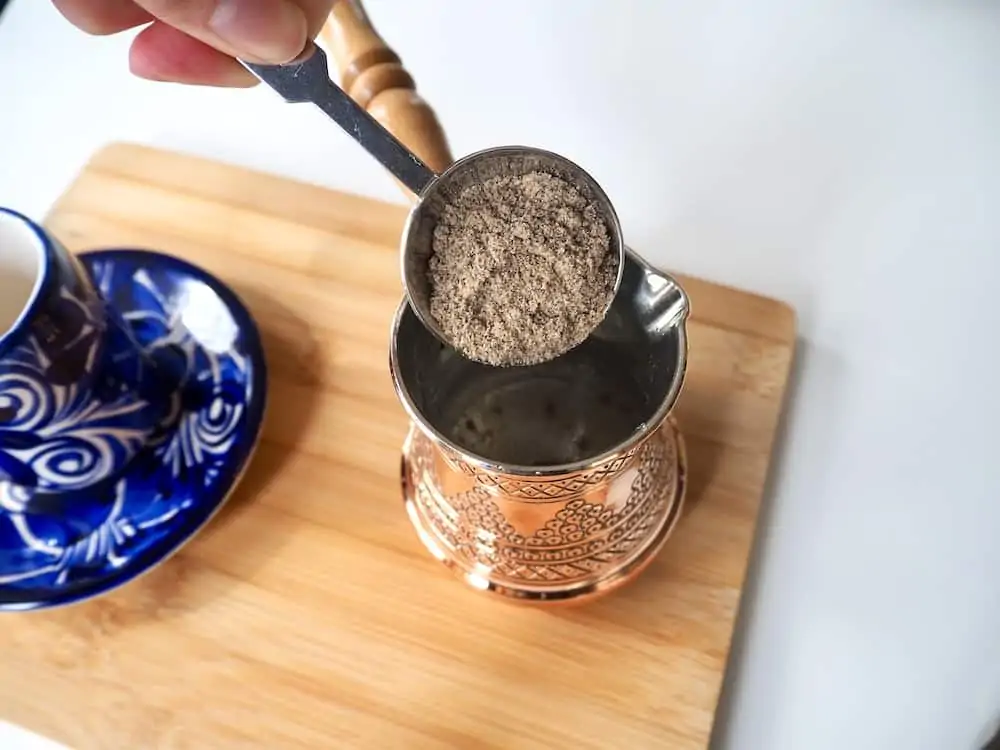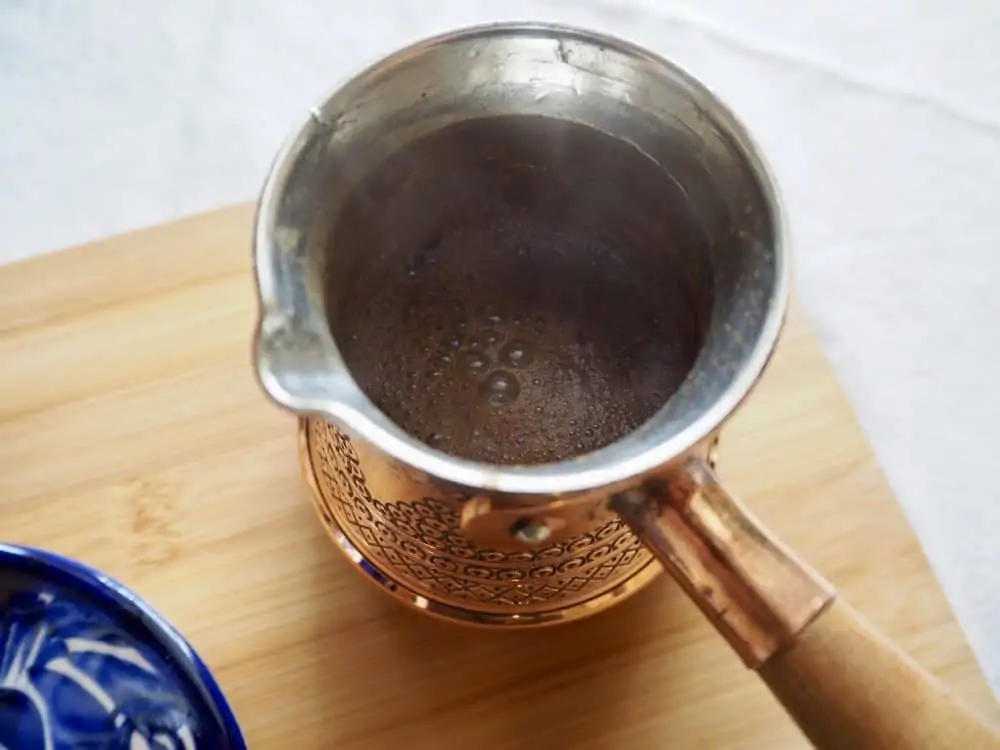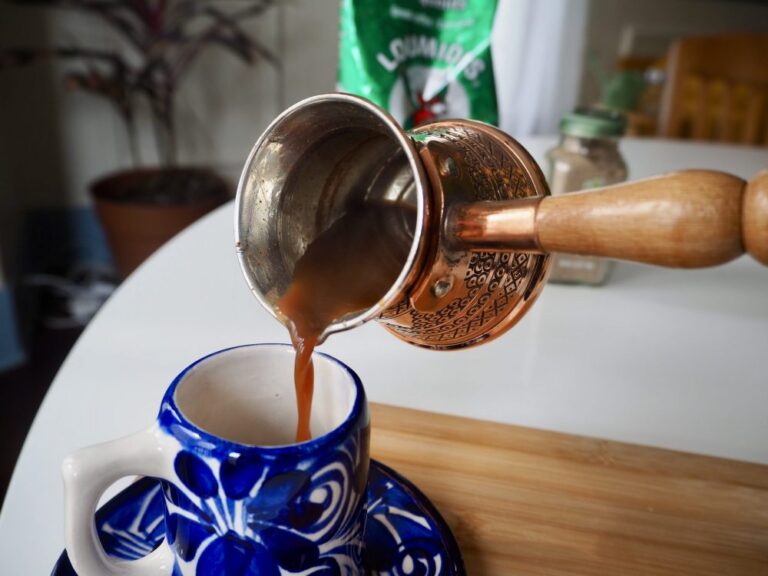Arabic coffee, with its rich history and unique preparation methods, is a beloved beverage that transcends mere refreshment. This easy recipe guide will help you bring the authentic taste of Arabic coffee into your home. From selecting the finest Arabica beans to mastering the brewing process and understanding the cultural etiquette of serving, you’ll be equipped to create a truly traditional coffee experience.
Key Takeaways
- Arabic coffee is a culturally significant drink made from dark roasted Arabica beans, often enhanced with cardamom.
- Choosing the right coffee, such as Caf\u00e9 Najjar, and ensuring its freshness are crucial for authentic flavor.
- The brewing process involves a balance between traditional methods and modern convenience, with a focus on achieving a perfect froth.
- Serving Arabic coffee properly is an art form, involving specific presentation techniques and etiquette.
- Exploring variations of Arabic coffee by experimenting with different roasts, blends, and spices can lead to creating your own signature brew.
Understanding Arabic Coffee

The Origins and Cultural Significance
Arabic coffee, with its rich tradition and unique preparation methods, is more than just a beverage; it’s a symbol of hospitality and social interaction in Arab culture. The origins of coffee houses trace back to 15th-century Mecca in Saudi Arabia, where the aromatic brew, known as qahveh, captivated the Arabian Peninsula and later spread to the rest of the world.
The cultural significance of Arabic coffee is deeply rooted in the customs and traditions of the Middle East. It is often served during social gatherings, business meetings, and as a sign of welcome to guests. The preparation and serving of Arabic coffee follow a set of ceremonial steps, reflecting the importance of the drink in social and cultural contexts.
Arabic coffee is not just a drink, but a cultural experience that embodies the spirit of generosity and hospitality.
As Arabic coffee gained popularity, it became a staple in many households and coffee houses, evolving into an art form that is cherished and passed down through generations.
Arabica Beans: The Heart of Arabic Coffee
At the core of Arabic coffee lies the Arabica bean, known for its superior quality and rich flavor profile. These beans are typically dark roasted to enhance their intense flavor and to complement the aromatic cardamom that is often added to the brew. The process of making Arabic coffee starts with selecting the finest Arabica beans, which are then finely ground and vacuum-packed to preserve their freshness and aroma.
To truly appreciate the essence of Arabic coffee, one must understand the meticulous care that goes into its preparation. A balanced, rounded body with overtones of beautifully scented cardamom is what sets it apart from other coffee varieties. Brands like Caf\u00e9 Najjar have mastered this craft, offering both regular and decaf options to cater to all preferences.
The perfect cup of Arabic coffee is not just about the beans; it’s a symphony of quality, roasting, grinding, and the harmonious blend of spices that create its signature taste.
When it comes to purchasing, prices can vary depending on the brand and quantity. For instance, a 1-pound bag of Caf\u00e9 Najjar Turkish Coffee may cost around $12.56, while a 200-gram pack of the decaf version is priced at $24.99. It’s essential to consider both the cost and the quality when selecting your Arabica beans for an authentic Arabic coffee experience.
The Role of Cardamom in Arabic Coffee
Cardamom is not merely a spice in Arabic coffee; it’s an essential ingredient that imparts a distinctive aroma and flavor, elevating the coffee experience. The addition of cardamom can transform the simple act of drinking coffee into a luxurious ritual.
In the preparation of Arabic coffee, the quantity of cardamom used can vary according to personal taste, but it typically ranges from a pinch to a quarter teaspoon per cup. The spice’s potent flavor complements the rich, dark roast of Arabica beans, creating a harmonious blend that is both invigorating and soothing.
The subtle yet impactful presence of cardamom in Arabic coffee is not just about taste; it’s also about creating a moment of cultural connection and tradition.
While some coffee enthusiasts prefer to grind their own cardamom pods, others opt for pre-ground cardamom for convenience. Here’s a simple guide to using cardamom in your Arabic coffee:
- Start with high-quality Arabica beans, dark roasted.
- Add cardamom to taste, ranging from a pinch to a quarter teaspoon per cup.
- For a more intense flavor, grind cardamom pods with the coffee beans.
- If using pre-ground cardamom, ensure it’s fresh to maintain its aromatic qualities.
Selecting Your Ingredients

Choosing the Right Coffee: Café Najjar and Other Brands
When embarking on the journey to make authentic Arabic coffee at home, selecting the right coffee is crucial. Café Najjar stands out as a prominent brand, known for its Turkish-style Gourmet Coffee that caters to a variety of tastes. This brand prides itself on a rich Brazilian ground coffee made from 100% Arabica beans, ensuring a premium coffee experience.
The choice of coffee brand can significantly influence the flavor and quality of your Arabic coffee. It’s not just about the coffee, it’s about the experience that comes with it.
Other brands also offer a range of options for Arabic coffee enthusiasts. It’s important to consider factors such as roast level, whether the coffee is flavored with cardamom, and the type of beans used. Here’s a quick comparison of Café Najjar offerings:
| Product | Price | Size | Roast | Flavor |
|---|---|---|---|---|
| Café Najjar Classic | $19.99 | 200 gr | Dark | Plain |
| Café Najjar Decaf | $24.99 | 200 gr | Dark | Plain |
| Café Najjar with Cardamom | $12.56 | 1 lb | Dark | Cardamom |
Remember to explore reviews and ratings, such as the 4.3 out of 5 stars given to Café Najjar, to gauge customer satisfaction. Ultimately, the best Arabic coffee is the one that suits your personal preference and brings you the most enjoyment.
Deciding Between Regular and Decaf
When it comes to Arabic coffee, the choice between regular and decaf can significantly affect both flavor and the experience. Decaffeinated coffee offers a milder taste and is ideal for those sensitive to caffeine or looking to enjoy a cup later in the day without disrupting sleep patterns. On the other hand, regular coffee provides the full, robust flavor and the stimulating effects of caffeine that many coffee lovers seek.
- Pros of Decaf: Reduced caffeine-related side effects, can be enjoyed any time.
- Pros of Regular: Full caffeine kick, richer flavor profile.
While the caffeine content is a primary difference, the choice also depends on personal health considerations and taste preference.
Remember that the decaffeination process typically removes 97% of the caffeine, leaving a trace amount that is usually inconsequential but important to note for those with high sensitivity. Whether you choose Café Najjar or another brand, ensure you’re selecting a high-quality product to get the best out of your Arabic coffee experience.
The Importance of Freshness and Quality
When it comes to Arabic coffee, the freshness and quality of the beans are paramount. Fresh beans ensure the full-bodied flavor and rich aroma that Arabic coffee is renowned for. Stale beans, on the other hand, can lead to a flat and flavorless experience, as some customers have unfortunately encountered.
The right packaging plays a crucial role in preserving the freshness of coffee. Innovative materials and vacuum sealing are essential to maintain the intense aroma and taste from the moment the beans are ground until the coffee is brewed.
Here’s a quick checklist to ensure you’re getting the freshest and highest quality Arabic coffee:
- Look for a recent roast date on the packaging.
- Choose vacuum-sealed bags with double walls for extended freshness.
- Opt for brands with a consistent track record of positive customer feedback on taste and aroma.
- Consider certifications like Organic, Fair Trade, or Rainforest Alliance as indicators of quality.
The Brewing Process

Traditional Methods vs. Modern Convenience
When it comes to brewing Arabic coffee, enthusiasts often debate the merits of traditional methods versus the convenience of modern appliances. Traditional brewing involves a ritualistic approach, using a dallah (a traditional Arabic coffee pot) and often a heat source like an open flame. This method is cherished for its authenticity and the unique flavor profile it imparts to the coffee.
On the other hand, modern coffee machines offer a quick and consistent alternative. Devices such as electric coffee grinders, espresso makers, and capsule machines have simplified the coffee-making process. Here’s a comparison of the two approaches:
- Traditional Method: Involves a dallah, open flame, and manual grinding.
- Modern Convenience: Utilizes electric grinders, espresso machines, and capsules.
While the modern method saves time and effort, it may not always capture the essence of traditional Arabic coffee, which is steeped in history and cultural practices.
Step-by-Step Guide to Making Arabic Coffee
Making Arabic Coffee at home is a delightful experience that combines tradition with the pleasure of savoring a richly aromatic beverage. Here’s a simple guide to help you brew the perfect cup:
- Add 3 teaspoons of your favorite Café Najjar Turkish Coffee to 180 ml of freshly heated water.
- Stir the mixture over heat until the coffee dissolves, then cease stirring.
- Continue heating until the coffee’s surface froths. Remove from heat before it reaches boiling point.
- Allow the coffee to settle briefly before serving.
The key to a perfect cup of Arabic coffee lies in the balance of flavors and the technique of heating. Patience is essential, as the coffee should never be allowed to boil. Instead, watch for the froth to form and remove it from the heat just before boiling to preserve the delicate taste and aroma.
Remember, the quality of your ingredients will greatly influence the final taste of your coffee. Using freshly ground Arabica beans and the right amount of cardamom will ensure a truly authentic experience.
Tips for Achieving the Perfect Froth
Achieving the perfect froth in Arabic coffee is both an art and a science. The key is to heat the coffee until the surface froths, but to remove it from the heat before it reaches a boil. This delicate balance ensures that the coffee is neither under-extracted nor burnt, preserving its rich flavor and creating the desired creamy froth on top.
- Stir the coffee mixture over heat until it dissolves completely.
- Cease stirring and continue to heat until you see the coffee surface froth.
- Remove from heat immediately before boiling to avoid losing the froth.
Patience is crucial in this step. Allow the coffee to settle after removing it from the heat. This waiting period is essential for the froth to stabilize and for the grounds to settle, resulting in a clear and flavorful cup of coffee.
Serving and Enjoying Your Coffee
Proper Presentation of Arabic Coffee
The art of serving Arabic coffee is as important as its preparation. Presentation is key to honoring the tradition and enhancing the overall experience. Here are a few tips to ensure your Arabic coffee is presented with elegance:
- Use traditional cups, known as Finjaan, which are small and often ornate.
- Serve the coffee on a decorative tray, adding to the visual appeal.
- Accompany the coffee with dates or traditional sweets, which complement the coffee’s rich flavor.
- When offering coffee, always use the right-hand gesture as a sign of respect and good manners.
- It’s customary to serve at least three rounds of coffee, signifying different stages of hospitality.
Remember, the presentation of Arabic coffee is not just about aesthetics; it’s a reflection of the host’s generosity and attention to detail.
Pairing with Sweets and Snacks
The experience of enjoying Arabic coffee is greatly enhanced when paired with the right sweets and snacks. Traditional Middle Eastern desserts make for an excellent accompaniment, offering a balance of flavors that complement the rich and aromatic coffee. Here are some popular choices:
- Qatayef Asafiri, a delightful cream-filled pancake
- Halawat el Jibn, sweet cheese rolls that melt in your mouth
- Date cookies, offering a sweet and nutty flavor
- Lebanese Baklava, with its layers of filo pastry and nuts
These treats not only satisfy the sweet tooth but also provide a textural contrast to the smooth coffee. It’s important to consider the intensity of the coffee’s flavor when selecting your dessert; a good rule of thumb is to match the richness of the coffee with the dessert.
When serving Arabic coffee, the presentation of sweets is just as important as the coffee itself. Arrange the desserts elegantly on a platter to create an inviting display for your guests.
Understanding the Etiquette of Serving Arabic Coffee
The tradition of serving Arabic coffee is steeped in hospitality and respect. The host plays a crucial role, ensuring that each guest is served with a fresh and flavorful cup. The coffee should be poured from a special pot called a ‘dallah’ into small cups, only filling them one-third to half full. This practice allows guests to enjoy multiple servings without feeling overwhelmed.
- The eldest guest is typically served first as a sign of respect.
- It is polite to accept at least one cup of coffee, even if you’re not a coffee drinker.
- After drinking, gently shake the cup from side to side to indicate that you do not wish for a refill.
The etiquette of serving coffee in Saudi Arabia is meticulous and laden with meaning. It begins with the host, who must ensure that the coffee is freshly prepared and served with grace.
Understanding these customs not only enhances the coffee experience but also shows appreciation for the rich cultural tapestry that Arabic coffee represents.
Exploring Variations and Flavors

Experimenting with Different Roasts and Blends
Arabic coffee offers a canvas for creativity, with various roasts and blends providing unique flavor profiles. Experimenting with different roasts can dramatically alter the taste of your coffee, from the light and subtle notes of a Blonde Roast to the intense and bold flavors of a Dark Roast. Consider the Jerusalem Blend: Dark Roast from The Palestinian Coffee Company, which combines three different coffees to achieve a deep color, excellent body, and a sweet finish.
When exploring blends, it’s not just about the roast but also the origin and type of beans. Arabica beans are known for their smooth, complex flavors, while Robusta beans offer a stronger, more robust taste. Here’s a list of flavors you might encounter:
- Chocolate Flavor
- Vanilla Flavor
- Berry Flavor
- Hazelnut Flavor
- Spicy Flavor
Embrace the journey of discovering your personal preference by sampling a variety of roasts and blends. Pay attention to the nuances each combination brings to your cup of Arabic coffee.
Adding Spices Beyond Cardamom
While cardamom is the star spice in Arabic coffee, there’s a world of flavors waiting to be explored. Many enthusiasts enjoy the addition of other aromatic spices that can transform the taste profile of their brew. Here are some popular additions:
- Saffron: Adds a luxurious, subtle taste and a golden hue.
- Cloves: Impart a warm, spicy kick.
- Cinnamon: Brings a sweet, woody aroma.
- Rose: Offers a delicate floral note.
Experimenting with these spices can lead to delightful variations in your Arabic coffee. Start with small amounts to find the balance that suits your palate.
Remember, the key to a successful spice blend is to complement, not overpower, the rich flavors of the Arabica beans. Each spice should be a harmonious addition, enhancing the coffee’s complexity without dominating it.
Creating Your Own Signature Arabic Coffee
Crafting your own signature Arabic coffee allows you to explore a world of flavors that cater to your personal taste. Experiment with the balance of coffee to cardamom to find the ratio that speaks to your palate. Consider the roast level of your Arabica beans; a darker roast will impart a more robust flavor, while a lighter roast may highlight the bean’s natural characteristics.
To start, use the following as a base recipe and adjust to your liking:
- 3 teaspoons of ground Arabica coffee
- 180 mL of freshly heated water
- Cardamom pods to taste (start with 1 pod for a subtle flavor)
Remember, the key to a memorable Arabic coffee is in the details. The freshness of your beans and the quality of your cardamom will make all the difference.
Once you’ve mastered the basic recipe, venture into adding other spices such as cinnamon, cloves, or even a hint of saffron. Keep a log of your experiments to track which combinations you enjoy the most. Your signature blend could be just a few brews away!
Conclusion
Making Arabic coffee at home is a delightful experience that brings the rich flavors and traditions of the Middle East right into your kitchen. With the easy recipe outlined in this article, you can enjoy the perfect cup of Arabic coffee anytime, using Café Najjar’s 100% Arabica coffee beans, which are dark roasted and finely ground to capture the essence of a truly authentic brew. Remember to follow the simple steps of heating, stirring, and allowing the coffee to froth for that signature taste. Whether you prefer it with the aromatic hint of cardamom or in its pure, decaffeinated form, Café Najjar offers a variety of options to suit your taste. So, gather your coffee pot, invite some friends, and immerse yourself in the pleasure of making and savoring your own Arabic coffee at home.
Frequently Asked Questions
What is Arabic coffee and how does it differ from regular coffee?
Arabic coffee refers to a method of preparing coffee that’s traditional in the Arab world. It is often made with Arabica beans, has a distinctive flavor due to the addition of cardamom, and is usually less acidic and lighter in taste compared to regular coffee. It’s also served in small cups without handles, often alongside dates or sweets.
Can I make Arabic coffee using a regular coffee machine?
While traditional Arabic coffee is typically made over a stove, you can use a Turkish coffee machine which is designed to handle the fine grind of Arabic coffee. Regular coffee machines may not be suitable due to the fine grind of the beans which could clog the machine.
What type of coffee beans should I use for Arabic coffee?
Arabic coffee is traditionally made with Arabica beans that are dark roasted. Brands like Café Najjar offer a variety of Arabic coffee, including options with cardamom and decaf versions, all of which are suitable for making authentic Arabic coffee at home.
How important is the grind of the coffee for Arabic coffee?
The grind is crucial for Arabic coffee. It should be a very fine grind, almost like powder, to ensure proper extraction and to avoid the coffee sitting at the bottom of the cup. Brands like Café Najjar provide the correct grind consistency for Arabic coffee.
Is cardamom necessary in Arabic coffee, and can I add other spices?
Cardamom is a traditional and essential spice in Arabic coffee, offering its signature aroma and flavor. However, you can experiment with other spices like saffron, cloves, or cinnamon to create your own signature blend.
What is the proper way to serve Arabic coffee?
Arabic coffee is usually served in small cups without handles, often as part of a hospitality ritual. It is poured from a special coffee pot called a dallah and served to guests starting from the eldest or most important, with the server holding the dallah with their left hand while pouring with the right. It is customary to offer guests at least one cup, but not more than three.




